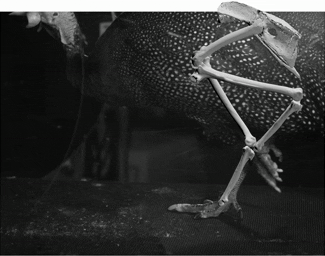 THE MANAFZADEH LAB
THE MANAFZADEH LABOur goal is to figure out how joints work and where they come from – both evolutionarily and developmentally.
Much of our work relies on a powerful technology called X-Ray Reconstruction of Moving Morphology (XROMM). Two millennia of biologists, unable to observe the inner mechanics of living animals, had no choice but to rely on untested assumptions about joint function. But XROMM allows us to see inside the bodies of living animals with 4-D “X-ray vision” and to create animations of their moving skeletons with sub-millimeter precision. Our research extends the capabilities of XROMM and integrates it with comparative anatomy to disrupt and transform our understanding of the morphological foundation of vertebrate animal motion.

(1) How do joints work?
Understanding the fundamentals of ‘how joints work’ requires determining how the unique 3-D shapes of articular tissues permit or restrict different types of motion. We develop new methodological frameworks for working with XROMM-derived data to bridge the gap between articular form and function, and implement these frameworks to conduct rigorous experimental studies of joints across the vertebrate tree. In the process, we clarify the articular basis of behaviors such as how fish swallow, how alligators walk, and how sea turtles swim.
(2) Where do joints come from, evolutionarily?
Studying the evolution of joints is integral to understanding major functional transformations over the past 500 million years of vertebrate history, such as the origins of terrestriality, arboreality, bipedalism, and flight. We synthesize data from experimental kinematics and osteological morphometrics to identify how joint form, function, and the relationship between the two have changed over deep time. To complement this work, we also undertake studies of articular diversification on shorter evolutionary time scales, permitting higher taxonomic resolution.
(3) Where do joints come from, developmentally?
The basic blueprint of joint anatomy is established well before animals come into the world, with the details of articular geometry gradually shaped during their maturation. However, studies of developmental transformations in vertebrate biomechanics remain exceedingly rare. We investigate articular form-function relationships at all ontogenetic stages from early embryos through adulthood. In parallel with our comparative work, we also collaborate with orthopedic surgeons and mechanical engineers to investigate human joint pathologies through a developmental lens.